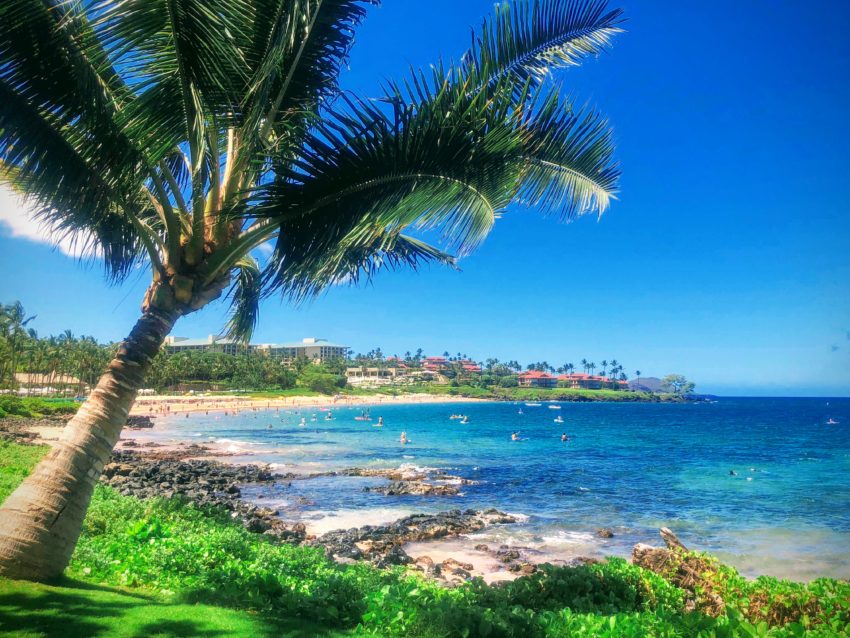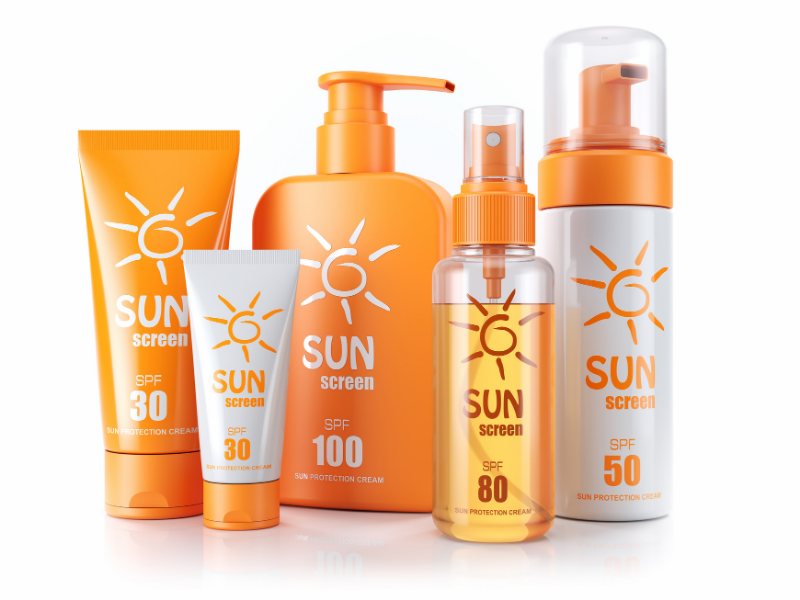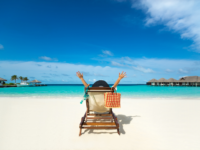Does your vacation destination have a sunscreen ban in effect?
According to the U.S. National Park Service, 4,000 to 6,000 tons of sunscreen (although there are estimates as high as 14,000 tons) enter reef areas each year. Most of this is concentrated in popular snorkeling and scuba diving tourist destinations.
Studies have shown that certain chemicals in sunscreens contribute to coral bleaching and eventually the death of the coral.
Thankfully, many tourist areas are getting smart and taking action. Popular vacation destinations like Hawaii and Aruba are now implementing sunscreen bans on products containing harmful ingredients.
This post will cover everything you need to know about the 7 popular tourist locations that have enacted sunscreen bans. Plus, we’ll give you a list of approved sunscreens that can be used on your next vacation.

Legal Stuff: This post may contain affiliate links and/or credit card referral links. Also, we participate in the Amazon Services LLC Associates Program, an affiliate advertising program designed to provide a means for us to earn fees by linking to Amazon.com and affiliated sites.
Sunscreen Bans
The ingredients in question are known as oxybenzone and octinoxate. These 2 chemicals are found in many popular sunscreens, but the good thing to know is that there are reef-safe options available (keep reading for recommendations).
Here are the locations that currently have sunscreen bans or have a ban that’s coming soon.
Hawaii Sunscreen Ban
Hawaii was the first state to ban sunscreens containing the harmful ingredients oxybenzone and octinoxate. The new law went into effect on January 1, 2021.
This means you won’t be able to purchase harmful sunscreen containing oxybenzone and octinoxate in Hawaii. Technically, you are still allowed to bring any type of sunscreen into the state, but it’s best to only use reef-safe sunscreen when participating in water activities like snorkeling or scuba diving.
The best sunscreen for your Hawaiian vacation is a reef-safe option that is mineral-based, containing zinc oxide and titanium oxide.
More About Hawaii: Planning a trip to Hawaii? Check out these hotels and activities first.
Key West Sunscreen Ban
Key West, the home to the largest coral reef in the continental United States, voted to ban the sale of sunscreens containing oxybenzone and octinoxate, 2 ingredients believed to be harmful to coral reefs. This ban was supposed to go into effect on January 1, 2021.
Miami Beach also tried to enact a sunscreen ban, but the city was unsuccessful. The Florida Senate made a decision that bans local sunscreen bans in the state, so these “bans” are not official since they were struck down by the Governor. However, it’s a good idea to still use reef-safe sunscreens in these areas.
Palau Sunscreen Ban
The western Pacific nation of Palau was the first country to place a ban on certain chemicals found in sunscreens. The ban, which went into effect on January 1, 2020, targets 10 chemicals deemed to be harmful to coral reefs. Avoid these sunscreen ingredients if you’re planning to travel to Palau:
- Oxybenzone
- Octinoxate
- Octocrylene
- 4-methyl-benzylidene camphor
- Triclosan
- Methylparaben
- Ethylparaben
- Butylparaben
- Benzyl paraben
- Phenoxyethanol
Mexico Sunscreen Ban
Some parts of Mexico ban non-biodegradable sunscreens. In Xel-Ha, a popular tourist area in Rivera Maya, you can swap out your sunscreen for a reef-safe variety and get yours back when you leave. Chankanaab Beach Adventure Park in Cozumel and Cabo Pulmo National Marine Park in Los Cabos also ban any non-biodegradable sunscreen.
When you’re visiting Mexico, look for a biodegradable and reef-safe sunscreen that doesn’t contain oxybenzone and octinoxate.

Bonaire Sunscreen Ban
Bonaire is a mecca for scuba divers so it’s no surprise that this small island has voted to ban harmful sunscreens. Since January 1, 2020, the island banned harmful sunscreens you’ll need to use sunscreen without oxybenzone or octinoxate if you want to get in the water in Bonaire.
When you’re not snorkeling or scuba diving, check out these other fun things to do in Bonaire.
Aruba Sunscreen Ban
Since July 2020 all sunscreens containing oxybenzone have been illegal on the island of Aruba. This small island goes even further and includes single-use plastics like cups, containers, and utensils in the ban (single-use plastic bags have been banned on the island since 2017).
U.S. Virgin Island Sunscreen Ban
Lawmakers in the U.S. Virgin Islands voted unanimously to ban the sale, distribution, and import of sunscreens containing oxybenzone or octinoxate. This law went into effect in March 2020.
Best Credit Card for Travel Expenses: Earn 3 points per $1 spent on all travel with the Chase Sapphire Reserve®
The Best Reef Safe Sunscreens
So, what’s a tourist to do? You want to protect the corals, but you can’t ignore your skin either. Look for sunscreens without oxybenzone and octinoxate that contain mineral sun blockers like zinc oxide and titanium dioxide instead. You can find these reef-safe sunscreens at most major retailers these days so it’s easy to make the switch.
What about avobenzone? Avobenzone isn’t part of any sunscreen ban lists, but it’s still a questionable ingredient. Therefore, the following list of reef-safe sunscreens has been updated to remove products containing avobenzone as well as oxybenzone and octinoxate.
Here are 9 reef-safe sunscreens available right now:
- Blue Lizard Australian Sunscreen, Sensitive SPF 30 (my personal favorite)
- Raw Elements Certified Natural Sunscreen Face + Body SPF 30
- All Good Sport Sunscreen Lotion, SPF 30
- Kokua Sun Care Reef Safe Natural Zinc Sunscreen SPF 50
- Reef Repair Suncream SPF 30
- Two Peas Organics Mineral Sunscreen SPF 30
- Stream2Sea Biodegradable Mineral Sunblock SPF 30
- Babo Botanicals Sheer Zinc Spray Sunscreen SPF 30
- Thrive Natural Body Mineral Sunscreen SPF 50
Another alternative is to wear sun-protective clothing. If you plan to be out in the water, consider wearing a rashguard to reduce the need for sunscreen. There are lots of styles available from retailers like Athleta, Walmart, or Amazon.
Best Card for Everyday Purchases: Earn 2 points per $1 on ALL purchases with the Capital One Venture X Rewards Credit Card
Sunscreen Bans and Reef Safe Sunscreen FAQ
Q: What do I need to know if I plan to visit an area with a sunscreen ban?
A: If you are planning to visit Hawaii, Key West, parts of Mexico, the U.S. Virgin Islands, Aruba, Bonaire, or Palau you will need to bring reef-safe sunscreen with you. These are sunscreens without oxybenzone and octinoxate. Instead, look for mineral-based sunscreen containing zinc oxide and titanium dioxide.
Q: What ingredients in sunscreen are bad for reefs?
A: The 2 main ingredients in sunscreens that are bad for reefs are oxybenzone and octinoxate.
Q: Where can I purchase sunscreen without oxybenzone or octinoxate?
A: You don’t need to visit a fancy boutique to find healthy, reef-safe sunscreens. They can even be found at popular retailers like Target and Amazon.
Q: Is avobenzone a safe sunscreen ingredient?
A: Avobenzone isn’t included in any sunscreen bans, but it’s still a questionable ingredient. We’ve updated our reef-safe sunscreen list to exclude any products containing avobenzone.
Q: How do you know if sunscreen is reef safe?
A: Look for a sunscreen that does NOT contain oxybenzone or octinoxate. You’ll want to find a mineral-based sunscreen that contains zinc oxide and/or titanium dioxide instead.
Q: What countries currently have sunscreen bans?
A: The countries/regions that currently have full or partial sunscreen bans are Mexico, the USA (Hawaii, Key West, U.S. Virgin Islands), Bonaire, Aruba, and Palau. If you are traveling to one of these areas, be sure to bring reef-safe sunscreen.
Q: What sunscreens are allowed in Hawaii?
A: When looking for a Hawaii-approved sunscreen, look for one that doesn’t contain oxybenzone or octinoxate. My favorite is the Blue Lizard brand, which is sold on Amazon, Walmart, and Target.



![A Weekend In Savannah, Georgia [Things To Do, Dining, Hotels, Tours]](https://www.zenlifeandtravel.com/wp-content/uploads/2021/09/Forsyth-Park-Fountain-Savannah-Georgia-200x150.png)

![Galápagos Packing List [What to Wear on a Galápagos Cruise]](https://www.zenlifeandtravel.com/wp-content/uploads/2022/05/Galapagos-backpack-200x150.jpg)
Please review your list of sunscreens – I looked at a few and they contained BOTH oxybenzone and octinoxate (#5 Tropical Sands, #7 and #15, Reef Safe). I imagine others on there have the same issue, so you are not doing the reef any favors by recommending these sunscreens.
Hi Julie,
Thanks for bringing this to my attention! I have removed the 2 “Reef Safe” sunscreens from my list. However, I checked on #5 Tropical Sands and can’t find either oxybenzone and octinoxate in that one. Do you have a link to something that states Tropical Sands contains those ingredients. Please email me at [email protected] — thanks so much for reading and for your input!
Informative. My family visited Mexico about ten years ago now and they had already stopped carrying most sunscreens that were not biodegradable or “eco” friendly. Glad to see it – we actually need to do so much more, but it’s a start.
Hi Jai,
I agree – it’s a step in the right direction, but there is so much more that is needed to be done. Thanks for your comment.